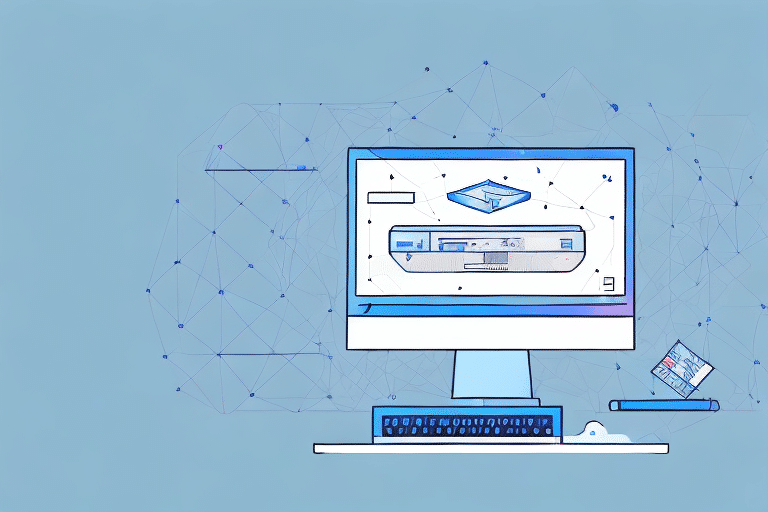How to Connect, Optimize, and Manage Local Shared Objects (LSO) for Shipping Software
Local Shared Objects (LSOs) have become increasingly important for shipping software in recent years. An LSO represents a piece of information that’s downloaded onto a user's computer from a server. This data can then be accessed by websites and apps for various functions, including tracking and personalization. In this article, we will delve into the importance of LSOs for shipping software and provide a comprehensive guide on how to connect, optimize, and manage LSOs for your shipping operations.
Understanding Local Shared Objects (LSO) and Their Importance for Shipping Software
LSOs function similarly to cookies but are capable of storing larger amounts of information and offer enhanced privacy controls. Shipping software utilizes LSOs for tracking packages and providing personalized shipping options to customers. When a customer accesses a shipping software website or app, LSOs are downloaded onto their device, allowing the software to gather valuable insights into user behavior and preferences.
One of the key benefits of LSOs is their ability to store data for extended periods compared to traditional cookies, which typically expire after a set duration. This longevity enables shipping software to continue offering personalized shipping options even if customers haven't interacted with the platform recently. Additionally, LSOs can store more complex data, such as user preferences for specific shipping carriers or delivery options, facilitating a more tailored customer experience that can enhance satisfaction and loyalty.
The Benefits of Implementing LSOs in Shipping Software
Implementing LSOs in your shipping software offers a range of benefits:
- Accurate Package Tracking: LSOs enable precise tracking of packages and shipments, ensuring real-time updates and transparency.
- Personalized Customer Experience: By remembering customer preferences, such as shipping addresses and payment methods, LSOs enhance the user experience.
- Targeted Marketing Campaigns: LSOs facilitate the development of personalized marketing strategies that cater to individual customer needs and interests.
- Enhanced Customer Service: Shipping companies can provide real-time updates on delivery status and send automated notifications, improving reliability and customer satisfaction.
Data-Driven Insights
Using LSOs allows shipping software to collect and analyze user data, providing insights that can drive business decisions. According to a Statista Report, companies leveraging customer data effectively can increase customer retention rates by up to 27%.
Challenges in Implementing LSOs for Shipping Software
While LSOs offer numerous advantages, their implementation comes with challenges:
- Privacy Compliance: Ensuring LSOs comply with regulations such as the General Data Protection Regulation (GDPR) is crucial to avoid legal repercussions.
- Technical Investment: Implementing LSOs requires significant investment in technology and expertise to avoid performance issues and security vulnerabilities.
- Interoperability: Shipping software often needs to integrate with other systems like customs clearance and logistics providers, making seamless communication between LSOs and these systems complex.
- User Acceptance: Educating users on the benefits of LSOs and ensuring transparent data usage is essential to gain user trust and adoption.
Addressing these challenges requires careful planning and execution to ensure successful LSO implementation.
Factors to Consider When Choosing an LSO Solution for Shipping Software
Selecting the right LSO solution involves evaluating several factors:
- Privacy Controls: Choose a solution that complies with privacy regulations and offers users control over their data.
- Cost and Scalability: Consider the affordability of the LSO solution and its ability to scale with your business growth.
- Compatibility: Ensure the LSO solution integrates seamlessly with your existing software stack.
- Customer Support: Opt for vendors that provide reliable and responsive customer support to address any issues promptly.
- Customization: The ability to tailor the LSO solution to meet specific business needs is crucial for optimal performance.
Evaluating these factors will help you select an LSO solution that aligns with your business objectives and operational requirements.
Step-by-Step Guide to Connecting LSO with Shipping Software
- Identify Software Modules: Determine which modules of your shipping software require LSO integration and map out their roles.
- Create an API: Develop an API to facilitate data exchange between your shipping software and LSOs.
- Integrate the API: Incorporate the API into your shipping software, ensuring it is optimized for performance and flexibility.
- Testing: Conduct thorough testing to ensure LSO integration complies with privacy regulations and does not cause performance issues.
Proper integration of LSOs can streamline shipping processes, reduce errors, and enhance customer satisfaction by providing real-time shipping data for informed business decisions.
Best Practices for Optimizing LSO Performance in Shipping Software
To optimize LSO performance, consider the following best practices:
- Efficient Data Transfer: Ensure that LSO data transfer is optimized to prevent performance degradation.
- Caching: Implement caching strategies to reduce latency associated with LSO data transfer.
- Load Balancing: Use load balancing to distribute data transfer loads evenly across servers.
- Clear Data Labeling: Label data clearly to ensure customers understand how their information is being used.
- Performance Monitoring: Regularly monitor and analyze performance metrics to identify and address bottlenecks.
- Stay Updated: Keep abreast of the latest LSO technologies and best practices to maintain efficient and effective data transfer processes.
Tips for Effectively Managing LSOs in Shipping Software
Effective management of LSOs involves ongoing attention and expertise:
- Regular Monitoring: Track LSO usage to ensure they are functioning correctly and being used as intended.
- Performance and Security Audits: Conduct regular audits to identify and address any vulnerabilities.
- Resource Allocation: Ensure sufficient resources, including personnel and technology, are dedicated to managing LSOs.
- Regulatory Compliance: Stay informed about industry standards and regulations related to data privacy and security.
- Adopt New Technologies: Utilize new tools and technologies to streamline LSO management and enhance efficiency.
By adhering to these tips, you can ensure that your LSOs are managed effectively, maintaining the integrity and performance of your shipping software.
Common Mistakes to Avoid When Implementing and Managing LSOs in Shipping Software
When implementing and managing LSOs, avoid the following common mistakes:
- Non-Compliance with Privacy Regulations: Ensure your LSO practices comply with all relevant privacy laws to avoid penalties and damage to your reputation.
- Inadequate Understanding: Implement LSOs with a clear understanding of their purpose and functionality to prevent performance and security issues.
- Over-Reliance on LSOs: Use LSOs as part of a broader strategy that balances privacy, performance, and user experience.
- Neglecting Updates: Regularly update and maintain LSOs to protect against security threats and ensure continued effectiveness.
- Poor User Communication: Clearly communicate with users about how LSOs are used, addressing any privacy and security concerns to build trust.
Future Trends and Developments in LSO Technology for Shipping Software
LSO technology is continually evolving, with several key trends and developments on the horizon:
- Increased Adoption in E-Commerce: LSOs are being increasingly utilized in e-commerce, especially in developing countries, to enhance shipping operations.
- Enhanced Privacy Controls: There is a growing demand for LSOs that offer greater privacy controls, allowing users to manage their data more effectively.
- Lightweight and Efficient Technologies: Future LSO technologies are expected to be more lightweight and efficient, enabling faster data transfer and improved performance.
- Integration with AI and Machine Learning: Emerging trends include the use of AI and ML algorithms to analyze and interpret LSO data, optimizing operations and personalizing customer experiences.
Integrating AI-powered LSOs can help shipping companies optimize their operations, reduce costs, and enhance customer satisfaction. For example, AI can analyze shipment data to identify patterns and predict delivery times more accurately, while ML algorithms can personalize marketing messages based on customer behavior.
In conclusion, LSO technology is vital for modern shipping software, offering numerous benefits while necessitating careful implementation and management. By following the guidelines and best practices outlined in this article, you can effectively connect, optimize, and manage LSOs, thereby enhancing shipment tracking, personalized marketing, and overall user experience. Staying informed about the latest trends and advancements in LSO technology will ensure your shipping software remains competitive and compliant in an ever-evolving technological landscape.




















